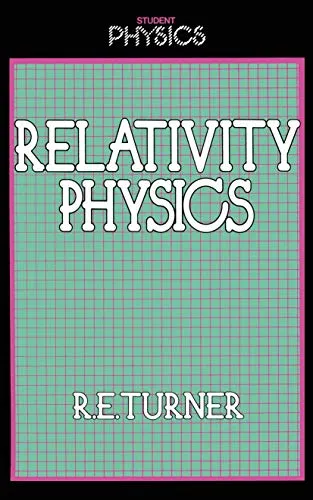
Free Download Relativity Physics by Roy E. Turner
English | PDF | 1984 | 154 Pages | ISBN : 0710200013 | 10.1 MB
It is somewhat presumptuous to produce yet another book on relativity, despite the fact that the
I have tried in this book to present mechanics and electro- magnetism in the context of special relativity, to explain, in turn, the problems that arose when the principle of relativity was applied to each of them and how Einstein showed that, once the leap in imagination was made, the solution was relatively simple. It is an exciting story and I hope that the book conveys, if only in parts, that excitement. But above all I hope that undergraduates will enjoy reading it, for physics is an enjoyable subject to try to understand.
The reader should have had a good grounding in Newton's equations of motion and an understanding of electromagnetism up to Maxwell's equations and their plane-wave solutions. Quan- tum mechanics is mentioned but the reader is only required to know the Planck and de Broglie relations. Some readers may find Chapter 7 hard going. The chapter is there for three reasons.
First, it brings together the two subjects that dominate this book, mechanics and electromagnetism. Second, relativistic equations of motion can be written down (despite the subsequent difficulties that they lead to) and very rarely are. Finally I hope it will encourage the interested student to go on and pursue the subject further.
Notation is very important in producing a clear presentation. I have steered away from tensor notation because, elegant though the equations look in this form, I believe that in a first reading it obscures the physics. Ordinary three-vectors are denoted as usual in bold type and their magnitude in normal type. Four-vectors are the same except they are distinguished by an arrow above them. Thus for example, the three-momentum is denoted by p and its magnitude by p. The four-momentum or energy-momentum four-vector by p and its 'magnitude' by {f.
Finally I should like to thank my colleagues in the physics division for the many questions that I have put to them over the years that I have given a course on this subject at the University of Sussex. This particularly applies to Drs G. Barton, J. Byrne and J. Plaskett who have tolerated my pestering with good humour. Any mistakes are of course my own.
[/b]
Code:
Bitte
Anmelden
oder
Registrieren
um Code Inhalt zu sehen!